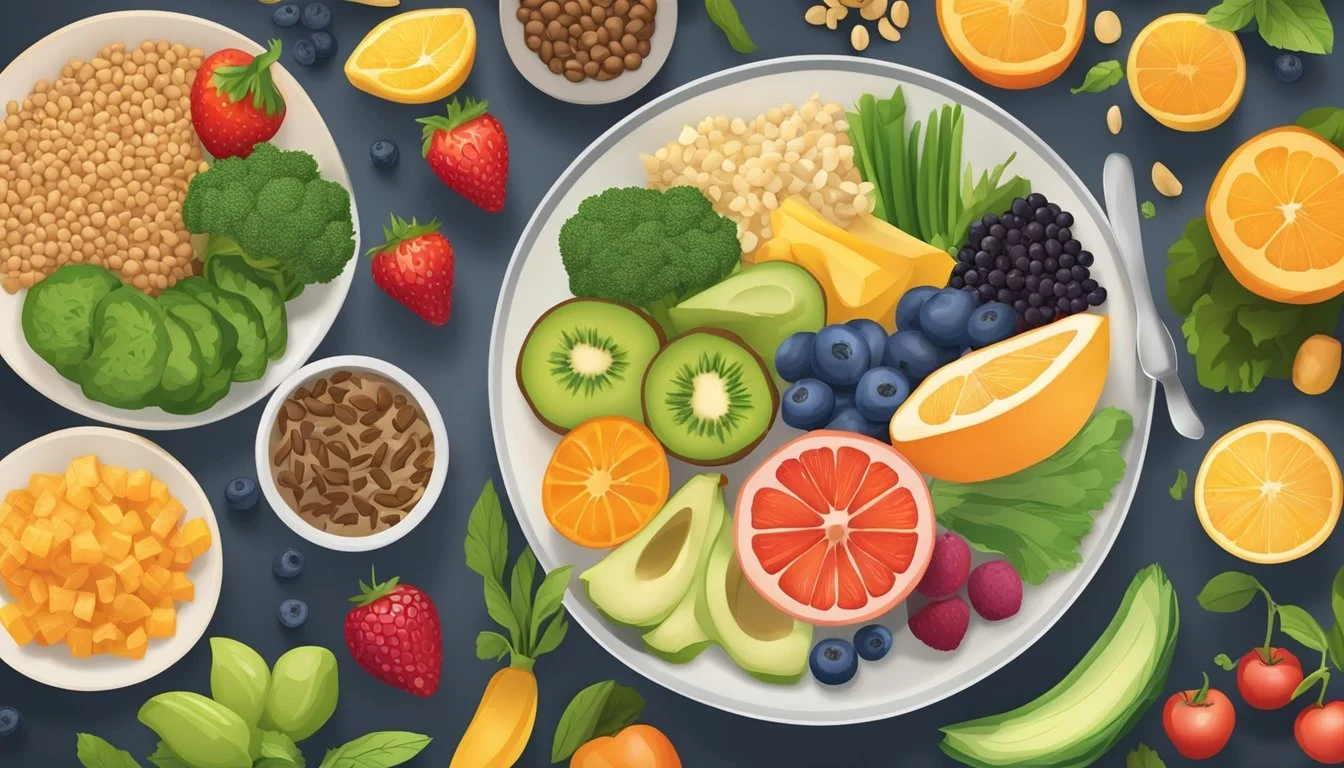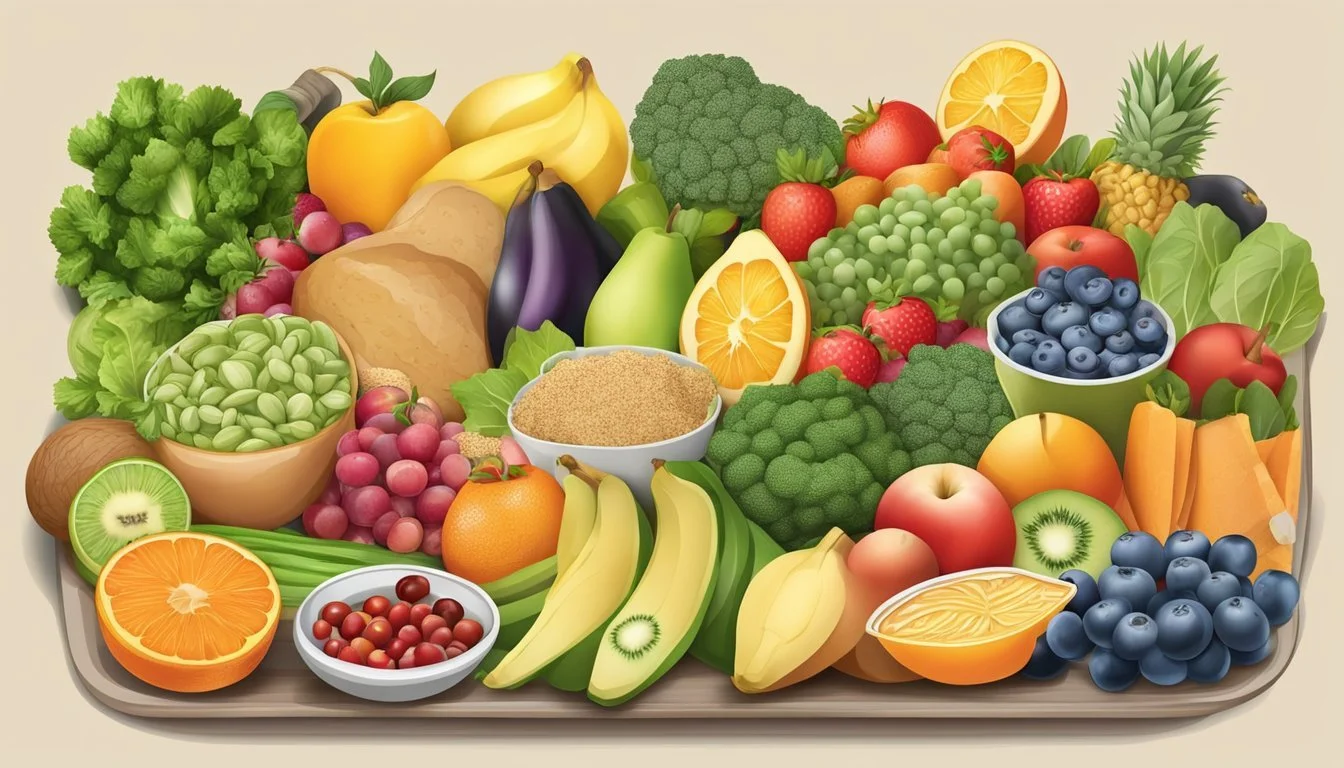Is it Safe to Follow the DASH Diet During Pregnancy?
Understanding Nutritional Impacts
The Dietary Approaches to Stop Hypertension, or DASH diet, endorsed for its potential to lower blood pressure in the general population, can also have specific benefits for pregnant women. While the diet emphasizes the intake of fruits, vegetables, whole grains, and lean meats, which collectively support maternal and fetal health, there remains a consideration of its safety and effectiveness during pregnancy. This diet naturally aligns with many nutritional recommendations for pregnant women, providing a rich array of essential nutrients needed for both mother and child.
Recent studies suggest that when pregnant women with a predisposition to high blood pressure follow the DASH diet, they may experience improved blood pressure patterns. This could be particularly beneficial given that hypertension is a known risk during pregnancy that can have adverse effects on maternal and fetal outcomes. By focusing on a diet high in fiber, calcium, potassium, and protein while low in saturated fat, cholesterol, and refined sugars, the DASH diet aligns well with prenatal dietary recommendations.
However, it is vital that any dietary modifications during pregnancy are made under the guidance of a healthcare professional. Although the DASH diet appears to support healthy gestational weight gain and may contribute to managing weight in overweight pregnant individuals, individual counseling ensures that the diet is adapted to meet the specific needs of the mother-to-be. The implications of the DASH diet on pregnancy outcomes warrant further investigation to validate its safety and efficacy in larger, diverse populations.
What Is the DASH Diet?
The DASH diet is a well-established eating plan designed to combat high blood pressure with a focus on nutrient-rich foods and reduced sodium intake.
Basic Principles of the DASH Diet
The foundational principle of the DASH diet is the reduction of hypertension through dietary adjustments. It emphasizes low sodium consumption paired with an increased intake of potassium, calcium, and magnesium. These nutrients are pivotal in managing blood pressure levels.
Sodium: The diet advocates for decreased salt intake.
Nutrients: It emphasizes getting enough potassium, calcium, and magnesium through diet.
DASH Diet Food Groups
The DASH diet categorizes foods into groups that one should aim to consume in certain amounts.
Fruits and Vegetables: These form the cornerstone, offering essential minerals and fibers.
Nuts, Seeds, and Legumes: Recommended in moderate amounts for their protein content and healthy fats.
Whole Grains: Integral for a balanced diet, providing energy and fiber.
Lean Proteins: Includes fish and poultry; recommended for maintaining muscle and overall health.
Dairy: Preferably fat-free or low-fat dairy products, providing calcium and protein.
Fatty Meats and Sweets: Limited intake is suggested to maintain the nutritional balance of the diet.
The DASH diet encourages diverse and balanced choices within these food groups, ensuring that nutrients are obtained through natural sources.
Pregnancy Nutritional Needs
During pregnancy, a woman's body requires additional nutrients, vitamins, and minerals to support the growing fetus. Adequate nutrition and controlled weight gain are crucial to the health of both the mother and the baby.
Increased Demand for Nutrients
Pregnant women need more protein, which is essential for the growth of fetal tissues, including the brain, and the expansion of uterine and breast tissue. Calcium is vital for fetal bone development, while magnesium helps with bone structure and is involved in muscle and nerve function. Potassium plays a role in maintaining fluid and electrolyte balance and is necessary for cellular function.
Protein: Additional 25 grams per day
Calcium: 1,000 milligrams daily
Magnesium: 350-360 milligrams per day
Potassium: 2,900 milligrams per day
Optimal Weight Gain During Pregnancy
The amount of weight a pregnant woman should gain varies based on her pre-pregnancy body mass index (BMI). Gaining an appropriate amount of weight is important for the baby’s growth and development and reduces the risk of pregnancy complications.
Underweight (BMI < 18.5): Gain 28-40 pounds
Normal weight (BMI 18.5-24.9): Gain 25-35 pounds
Overweight (BMI 25-29.9): Gain 15-25 pounds
Obese (BMI ≥ 30): Gain 11-20 pounds
Controlling caloric intake is also essential to manage weight effectively. On average, pregnant women need an additional 340-450 calories a day during the second and third trimesters, compared to their pre-pregnancy diet.
DASH Diet and Pregnancy Health
The DASH diet, designed to combat high blood pressure, may offer health benefits during pregnancy, including management of blood pressure and potential prevention of gestational hypertension and preeclampsia. Research suggests it could also influence gestational diabetes.
Blood Pressure Management
Pregnancy prompts physiological changes which can affect blood pressure. The DASH diet -- rich in fruits, vegetables, whole grains, and lean proteins -- is recognized for its blood pressure-lowering effects. Its nutrient profile supports vascular health, which is crucial for both the mother and developing fetus.
Preventing Gestational Hypertension and Preeclampsia
Gestational hypertension -- high blood pressure that develops after the 20th week of pregnancy -- and preeclampsia -- a more severe condition that affects both the mother and the unborn baby -- are significant concerns. Studies indicate that adherence to the DASH diet during pregnancy can lower the risk of these conditions, likely due to the diet's low sodium and high potassium content, which are key factors in blood pressure regulation.
Impact on Gestational Diabetes
Gestational diabetes mellitus (GDM) is a condition where a woman without diabetes develops high blood sugar levels during pregnancy. The DASH diet may promote insulin sensitivity, improving blood sugar control and potentially reducing the incidence of GDM. This is particularly pertinent as GDM can lead to adverse pregnancy outcomes. Following the DASH diet could be an effective strategy for reducing the risk of GDM, but it is essential to do so under professional guidance to ensure all nutritional needs are met for both mother and child.
Adapting the DASH Diet for Pregnancy
When adapting the Dietary Approaches to Stop Hypertension (DASH) diet for pregnancy, one should delicately balance the necessary nutrient intake while maintaining the principles of the diet, which focuses on high consumption of fruits, vegetables, whole grains, and lean proteins, alongside moderate intake of nuts, seeds, and legumes, with limited fats, oils, and added sugars.
Recommended Dietary Adjustments
For pregnant women, calorie needs increase, but the quality of calories consumed is paramount. They must ensure that the additional calorie intake comes from nutrient-rich sources to support fetal growth and their own health. It is essential to adjust portions appropriately, increasing intake especially in the second and third trimesters, while continuing to restrict added sugars and excessive sodium in line with the DASH diet's foundations.
Considering Nutrient Requirements
During pregnancy, the body demands more of certain nutrients including iron, calcium, folic acid, and protein. Adhering to the DASH diet while pregnant means ensuring these needs are met. One may need to consume higher amounts of low-fat dairy products for calcium and lean red meats or legumes for iron. Supplementation should only be considered after consulting with a healthcare provider.
Food Group Recommendations
Food Group Recommendations Fruits 4-5 servings/day Vegetables 4-5 servings/day Whole Grains 6-8 servings/day Lean Proteins 2 or less servings/day Dairy 2-3 servings/day Nuts, Seeds, Legumes 4-5 servings per week Fats and Oils 2-3 servings/day Sodium Limit to 2300mg/day Added Sugars Limit substantially
The focus remains on getting the majority of nutrients from food. Pregnant women should include a variety of fruits and vegetables each day. Whole grains should be selected over refined grains to ensure adequate fiber intake. Adequate lean proteins are necessary for fetal development, while nuts, seeds, and legumes provide beneficial fats and are good protein alternatives. Dairy intake should be focused on low-fat options to meet increased calcium needs. Finally, limiting intake of fats and oils, and avoiding foods high in added sugars and sodium helps maintain a healthy blood pressure, which is crucial during pregnancy.
Health Considerations and Risks
When adopting the DASH diet during pregnancy, it is vital to consider the balance of sodium restriction and adequate nutrient intake to support both maternal health and fetal development.
Concerns with Sodium Restriction
Sodium plays a pivotal role in maintaining blood volume and blood pressure. However, excessive sodium intake is linked to hypertensive disorders, which are significant concerns during pregnancy. The DASH diet promotes a lower sodium intake to help control blood pressure, but a careful approach is needed during pregnancy. It is important to ensure that sodium levels are not restrictively low, as sodium is crucial for normal fluid balance and nerve function.
Potential Nutrient Deficiencies
The DASH diet encourages high consumption of fruits, vegetables, and whole grains, while being lower in fats and red meat. During pregnancy, key nutrients such as calcium, magnesium, and potassium are vital for fetal growth and can be adequately supplied by following the DASH principles. However, attention should be given to:
Calcium: Essential for fetal skeletal development. Dairy products are primary sources, but alternatives may be needed for those with lactose intolerance.
Magnesium: Supports muscular health and prevents hypertension. Found in nuts, seeds, and green leafy vegetables.
Potassium: Crucial for maintaining electrolyte balance and assisting in nerve functions. Abundant in fruits and vegetables.
Pregnant individuals should consult healthcare providers to ensure these nutrients are consumed in the right amounts to avoid deficiencies while managing blood pressure effectively.
Comparing DASH with Other Diets
This section explores how the DASH diet aligns with and differs from the Mediterranean diet and standard dietary recommendations, specifically for pregnant women seeking nutritious and safe diet plans.
Mediterranean Diet vs DASH Diet
The DASH diet (Dietary Approaches to Stop Hypertension) and the Mediterranean diet share a strong emphasis on the consumption of fruits, vegetables, and whole grains. Both diets encourage the intake of heart-healthy fats but diverge slightly in their approach to certain food groups.
Fruit and Vegetable Intake: Both diets promote a high intake.
Whole Grains: A staple in both diets, though portion sizes may vary.
Fats: The Mediterranean diet is richer in healthy fats, particularly from fish and olive oil.
Dairy: The DASH diet includes low-fat or nonfat dairy, whereas the Mediterranean diet has moderate dairy consumption, mostly in the form of cheese and yogurt.
Meats: The DASH diet limits red and processed meats more than the Mediterranean diet does.
The Mediterranean diet allows for a higher consumption of fish. In comparison, the DASH diet is stricter with its limits on sodium and processed foods, making it a diet that is often recommended for blood pressure management.
Standard Dietary Recommendations
Standard dietary guidelines often cater to the general population, including pregnant women, and are used as a baseline for a balanced diet. They typically encompass a wide variety of foods from all the major food groups in moderation.
Fruits and Vegetables: Encouraged in both standard recommendations and the DASH diet.
Whole Grains: Integral to both dietary plans.
Dairy: Standard guidelines do not specify low-fat dairy, unlike the DASH diet.
Protein: Both diets recommend lean protein, but the standard guidelines may not limit red and processed meat as strictly as the DASH diet.
Sodium: The DASH diet is known for its low sodium intake, which may be less of a focus in standard dietary recommendations.
For pregnant women, the DASH diet can be adapted to meet the higher nutritional needs during pregnancy, particularly with its focus on reducing sodium intake and limiting processed foods, while ensuring adequate calcium and protein levels essential for fetal development.
Practical Tips for Following the DASH Diet While Pregnant
Adhering to the DASH diet during pregnancy involves careful meal planning and understanding portion sizes to ensure sufficient nutrient intake. These tips can aid pregnant women in maintaining a healthy diet that aligns with the DASH diet principles.
Meal Planning and Preparation
To successfully follow the DASH diet, pregnant women should prioritize meal planning. This involves selecting a variety of foods rich in potassium, calcium, magnesium, and fiber, and low in saturated fat and sodium. A weekly meal plan might consist of:
Fruits: 4-5 servings per day
Vegetables: 4-5 servings per day
Whole grains: 6-8 servings per day
Lean proteins (fish, poultry): 2 or fewer servings per day
Dairy (low-fat or fat-free): 2-3 servings per day
It's advised to prepare meals at home, which allows for better control over ingredients and portion sizes. Using a table that lists food items and their corresponding DASH servings can simplify the planning process.
Monitoring Portions and Servings
Understanding and adhering to recommended servings is crucial for pregnant women on the DASH diet. A few guidelines include:
Vegetables and fruits: A serving size might look like a medium fruit or ½ cup cooked vegetables.
Whole grains: Consider 1 slice of whole-grain bread or ½ cup of cooked rice or pasta as one serving.
Dairy: One serving is typically 1 cup of milk or yogurt.
Measuring cups and digital scales are practical tools for ensuring accurate portions, aligning with the DASH dietary recommendations.
Eating Out and Social Occasions
During social occasions or when dining out, pregnant women can adhere to the DASH diet by:
Choosing wisely: Opt for dishes rich in vegetables and whole grains and ask for dressings and sauces on the side.
Portion control: Share entrees or set aside a portion of the meal to take home.
Special requests: Don't hesitate to ask for dishes to be prepared with less sodium or without added salts or fats.
Following these tips ensures that even in social settings, one can maintain the dietary intervention of the DASH diet and contribute to a healthy pregnancy.
Conclusion
The DASH diet, typically recommended for its benefits in lowering blood pressure, has been assessed for its potential influence on pregnancy. Research indicates that it can contribute positively to gestational weight management and certain perinatal outcomes.
Review of Key Points
The DASH diet has been studied in the context of pregnancy, showing that it can lead to lower gestational weight gain when compared to a control diet.
Studies suggest potential benefits of the DASH diet on perinatal outcomes in pregnant women with gestational diabetes mellitus (GDM) and pre-existing diabetes mellitus (DM).
Pregnant women following the DASH diet have displayed improved blood pressure patterns and limited weight gain, which are crucial aspects of a healthy pregnancy.
Dietary interventions, such as the DASH diet, may improve pregnancy outcomes, but their effectiveness and safety need to be considered on an individual basis.
Consulting Healthcare Providers
Pregnant individuals must consult their healthcare providers before making any dietary changes, including adopting the DASH diet.
Healthcare providers can offer personalized advice based on the individual's health history, current condition, and specific nutritional needs during pregnancy.
A healthcare provider’s supervision ensures any dietary intervention, like the DASH diet, is tailored to support the best possible pregnancy outcomes.









